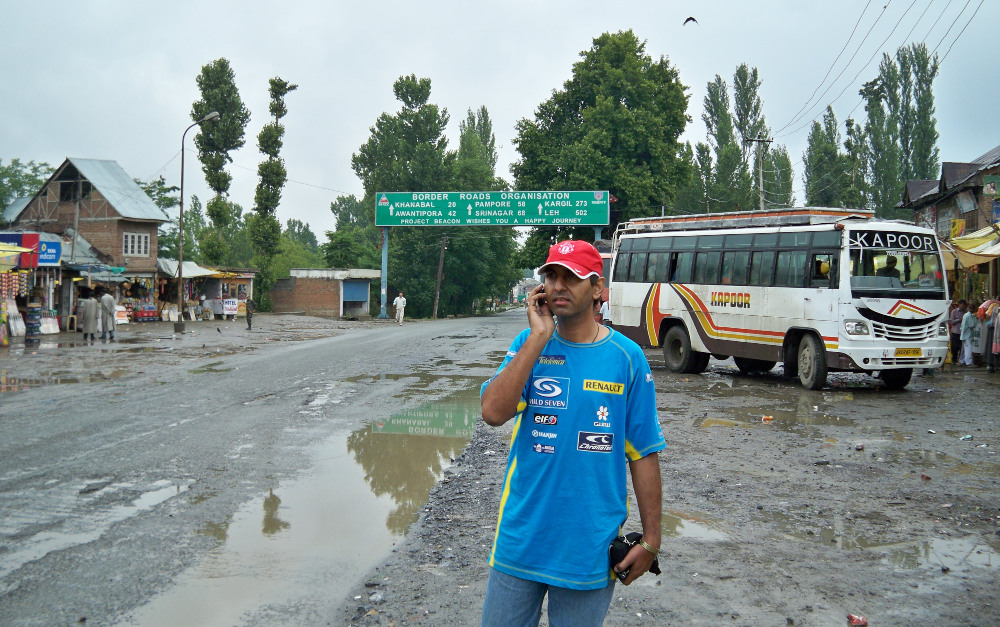Dal Lake – Srinagar – Jammu and Kashmir

Srinagar, city, summer capital of Jammu and Kashmir union territory (Jammu is the winter capital), northern India, situated in the Kashmir region of the Indian subcontinent. The city lies along the banks of the Jhelum River at an elevation of 5,200 feet (1,600 metres) in the Vale of Kashmir.
Situated amid clear lakes and lofty forested mountains, Srinagar has long had a considerable tourist economy. Along its course through the city, the Jhelum River is spanned by several wooden bridges, and numerous adjacent canals and waterways abound with shikara, the gondolas of Kashmir. Srinagar is well known for its many mosques and temples; the Hazratbal Mosque contains a hair that reportedly belonged to the Prophet Muhammad, and the Jāmiʿ Masjid (Congregational Mosque), built in the 15th century, is said to be the largest mosque in Kashmir. Dal Lake, with its “floating gardens,” is a well-known attraction, as are the nearby Shalimar and Nishat gardens.
Srinagar has the distinction of having multifaceted and unique cultural blend, making it exclusive from the rest of the country, not only from the different cultural forms and heritage, but from geographical, demographically, ethical, social entities, which forms a distinct spectrum of diversity.
The Dal Lake which has the length of 8 Km long and a width of 4 Km, spreads over a total of 26 Sq. Km. The fascinating Dal Lake is divided into two smaller ones the Lokut (small) and Bod (big) Dal. The south western part of the lake has a maximum depth of approximately 12 M. the Dal Lake gets some of its water from spring but is also supplemented by water from the mountain lake, Mar Sar. In the western part of the Lake one can glimpse a few islands, some bigger, some smaller. Its shores are very fertile and surrounded by willows.
Mughal Gardens, as the name suggests, built in the Mughal period is a marvel located in Srinagar. These gardens are the major attractions of the tourists to Jammu and Kashmir. These gardens are the nice example of the Mughal style of constructing attractive places.
The name Mughal Gardens is given for the combination of three renowned gardens namely the Nishat Bagh, Shalimar Gardens and Chashmashahi. These gardens are tourists’ paradise and are beautifully decorated with bright flowerbeds, terraced lawns and well maintained cascading fountains. No tourist can miss these three nice marvelous gardens.
The Hazratbal shrine lies at a distance of 25 kilometers from the Badgam district in Srinagar, Kashmir. This pilgrimage destination is known by a number of names viz. the Assar-e-Sharif, Madinat-us-Sani and the Dargah Sharif. Mughal emperor Shahjahan’s brother constructed the Ishrat Mahal at the site of the shrine sometime in the year 1623, later when the emperor himself visited the site he ordered the place to be converted into a prayer house. The shrine as such was built by the Muslim Auqaf trust. Before the Hazratbal shrine was constructed the sacred hair was placed in the shrine of Naqshband Sahib. The architecture of the shrine is a combination of Mughal and traditional Kashmiri.
The Shankracharya Mandir of Kashmir, India is dedicated to Lord Shiva and is thought to be the oldest shrine in the Kashmir valley. The temple, as it stands today, has undergone many repairs throughout its life. The first repair is supposed to have been done under the rule of Lalitaditya. The second repairs were undertaken by Zain-ul-Abideen after the temple got damaged in an earthquake. These repairs were carried out during the Governorship of Sheikh Mohi-ud-Din. Maharaja Gulab Singh, a Dogra ruler, is credited for the stone steps that form a part of the passage to the shrine. The electrification of the Shankracharya temple was done in 1925.














